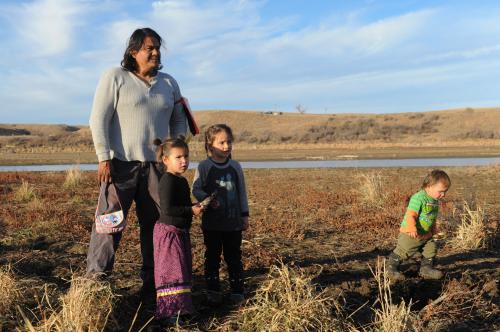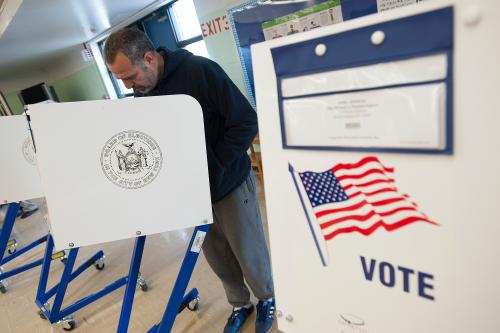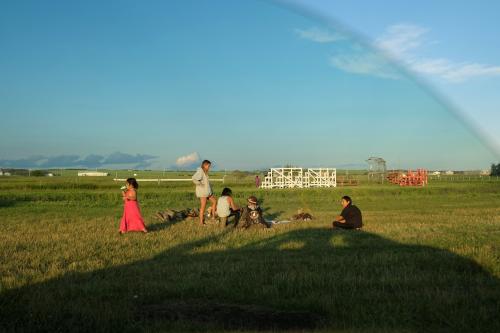For one group of children in particular, American Indians and Alaska Natives, exceedingly high poverty rates have had profound impacts on community wellbeing and long-term cohesiveness. Given the best available data, from the U.S. Census data, child poverty rates among American Indians and Alaska Natives have consistently exceeded 40% for almost the past 30 years.
However, a recent National Academics of Sciences (NAS) report affirms what many in these communities have long known—that the data on poverty are sparse and not as reliable for this group as it is for other groups or communities in the U.S.:
“Small sample sizes in population surveys have made it particularly difficult to reliably measure poverty rates among American Indian and Alaska Native children. Moreover, we know little about the effectiveness of a number of important programs and policies – whether provided by the tribes, by the states, or by the federal government – that affect this population.”
As a result, it is quite difficult to accurately track the impact that various programs have had on child poverty over time or how applicable standard assessments of what poverty looks like actually are to American Indian communities. Are conditions as bad as indicated by the official poverty rates shown above? Historically, high levels of perceived poverty have been used to justify the removal of American Indian children from their households by state foster care systems. As recently as the 1970s, state welfare agents were removing almost one third of all American Indian children from their households and placing them in state foster or adoptive care systems. (Mannes, 1995)
One of the aims of the Indian Child Welfare Act (ICWA) of 1978 was to stop the removal of American Indian children from their households due to poverty. A number of studies had confirmed that social workers were removing American Indian children from households not due to maltreatment or being orphaned but simply due to the perceived poverty status of the household (see MacEachron, Ann E., and Nora Gustavsson, 2005). The ICWA legislation was intended to improve tribal control over the determination and placement of American Indian children within the foster care system.
Congress reaffirmed tribal government authority and oversight of the placement of its own citizens – its children. Tribal courts were delegated the authority and jurisdiction over the placement of its own citizens (and those eligible for tribal citizenship enrollment) in foster or adoptive homes.
ICWA prioritizes the judgment and decisions of the officials with the most experience and understanding of local conditions and experiences – tribal officials. Local economic conditions may differ between the on and off reservation communities. In assessing poverty and neglect on American Indian reservations, there are important cultural and social behaviors that may differ dramatically from surrounding non-reservation communities.
For instance, Chris Newell (Passamaquoddy; Director of Education; Akomawt Educational Initiative) describes a fundamental misunderstanding of the concept of family and neglect in his Passamaquoddy community in Maine:
“In Maine, parents would often leave their children with their grandparents or other extended family members when they would leave for seasonal work elsewhere. To the state, however, this constitutes neglect and could qualify a child for removal. In reality, our children’s needs were commonly met by extended family and community beyond the nuclear family.”
Mr. Newell served as a senior advisor on a recent documentary film called “Dawnland,” which exposes the impact of such practices on American Indian children and their parents decades later in the state of Maine. The film depicts the long-term trauma and damage that resulted from the removal of children from their families; it also shows the damage to the children caused by their removal from their kinship network and cultural connections.
Individuals with little exposure to or experience with American Indian communities would have little to no knowledge of these forms of social safety nets.
Assessing economic conditions may also be quite difficult for individuals who are unfamiliar with American Indian communities and practices. There are important culturally-specific safety nets that exist in many American Indian communities; most of which would be unknown to outsiders. Individuals with little exposure to or experience with American Indian communities would have little to no knowledge of these forms of social safety nets.
The recent NAS report indicates that even standard measures of poverty are difficult to measure for the American Indian population. However, neither the Official Poverty Measure (OPM) nor the Supplemental Poverty Measure (SPM), which includes taxes and federal government in-kind transfers, account for community or kinship in-kind transfers or from tribal governments. In certain American Indian communities, for instance, hunting, trapping, fishing and other subsistence activities are important parts of the economic and social interactions of community members. These activities do not show up directly as cash income nor are they identified as federal government in-kind transfers. As a result, the OPM and SPM measures may not accurately depict the general welfare of American Indian families or children. In fact, they may understate the resources in some families and whole communities.
While this does not dismiss the fact that child poverty is probably still too high in many American Indian reservations, it does indicate that there may be other activities or practices that exist in non-market (even non-governmental) forms to assist families. Subsistence activities and the sharing of resources is difficult to document with administrative records or tax returns; nevertheless, these safety nets have played an important role in these communities for hundreds if not thousands of years. Individuals with little exposure to or experience with American Indian communities would have little to no knowledge of these forms of social safety nets.
Challenges to ICWA often focus on an erroneous assumption that these policies are race-based. However, providing tribal government jurisdiction and authority over its own citizens’ welfare is based on American Indian tribal sovereignty- not race. Tribal citizenship enrollment and eligibility is based on tribal government rules which are often specific to a particular tribe and may require showing direct lineal descent from certain enrolled ancestors; there may be other additional conditions for tribal citizenship such as a minimum blood quantum, residency requirement or demonstrated relationship with the community. In the current court case, Brackeen v. Zinke, where oral arguments are scheduled to begin in the Fifth Circuit court this week, the same arguments have been made. ICWA has played an important role in stopping the seizure of American Indian children from their communities. Misunderstanding of how American Indian communities care for their own children and the inability to assess non-monetary well-being of American Indian communities should not play a role in the removal of children from their homes. ICWA plays a critical role in safeguarding these children and maintaining the local and tribal authority for placing American Indian children in foster or adoptive care. Let’s not go backwards.
Sources:
“7 Other Policy and Program Approaches to Child Poverty Reduction.” National Academies of Sciences, Engineering, and Medicine. 2019. A Roadmap to Reducing Child Poverty. Washington, DC: The National Academies Press. Page XXX. doi: 10.17226/25246
Mannes, M. (1995). Factors and events leading to the passage of the Indian Child Welfare Act. Child Welfare, 74(1), 264–282.
National Academies of Sciences, Engineering, and Medicine. 2019. A Roadmap to Reducing Child Poverty. Washington, DC: The National Academies Press. “7 Other Policy and Program Approaches to Child Poverty Reduction.” Page 203. doi: 10.17226/25246.
MacEachron, A. E., Gustavsson, N. S., Cross, S., & Lewis, A. (1996). The effectiveness of the Indian Child Welfare Act of 1978. The Social Service Review, 70(3), 451–463.






Commentary
How does measuring poverty and welfare affect American Indian children?
March 12, 2019